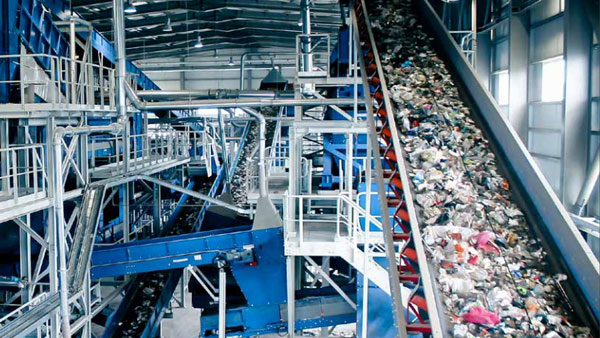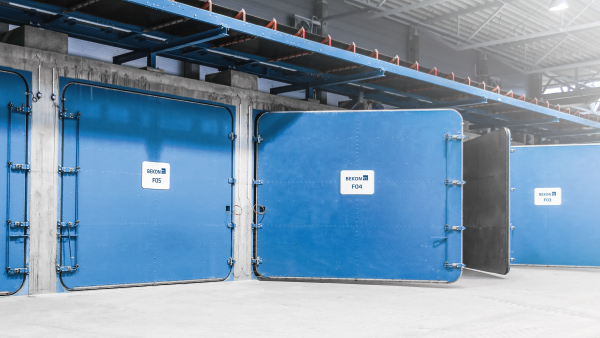Treatment of Household Waste
What is Household Waste?
Household waste belongs – like commercial waste, bulky waste or industrial waste – to the broad category of municipal waste. As the term "household waste" already suggests, this is specifically waste that accumulates in households and household-like areas.
Depending on the country and region, there are differences in the composition of household waste and it is treated differently accordingly.
How is Household Waste Dealt With?
The way household waste is dealt with varies – while in countries like the USA large parts of all municipal waste, including household waste, are still landfilled, in many EU countries thermal recycling for household waste is the established option. Landfilling is usually linked to appropriate pre-treatment of the material, or special regulations are imposed on the landfills. For example, landfills in the USA are equipped with special foils as well as leaching and exhaust systems, etc. In developing and emerging countries in particular, however, there are often hardly any, if at all, specifications for the design of landfills. Large quantities of household waste are also disposed of in illegal landfills.
How Should Household Waste be Processed?
Basically, a combination of mechanical and biological treatment of household waste is recommended. Depending on the composition and especially the moisture content, there are different approaches. First of all, with biological drying, a large part of the moisture can be removed. This facilitates the subsequent mechanical sorting. If this option is not available, the household waste can also be sent directly to a sorting plant.
If the share of recyclables in the material is very high, it is advisable to "handle the material gently". The material should therefore be fed to the BRT HARTNER Bag Opener. Then it is ensured that the valuable materials are soiled or shredded as little as possible. In addition, the risk of fire is reduced because batteries or pressure vessels are not damaged.
If the share of recyclable materials is low and the aim of sorting is only the production of substitute fuel, the input material is usually pre-shredded. For this purpose we offer our stationary TEUTON or FORUS shredders. The TEUTON shredders have more power and achieve a significantly higher throughput, while the FORUS, with its two asynchronously running shafts, is particularly suitable for brittle material or where there is a risk of entanglement.
For mechanical sorting - regardless of whether the material is fed into the process by bag opener or shredder – key components such as trommel screens, ballistic separators or disc screens of the BRT HARTNER or Eggersmann brands are always the right choice. All fractions of household waste that neither belong to a recyclable material fraction nor can be used as RDF are considered sorting residues. These can only be landfilled or thermally treated. In the case of thermal treatment, it may be possible to process the grate ash (waste incineration plant) as a substitute building material. We also offer solutions for this.
After sorting, the fines, which usually consist to a large extent of organic material, should be subjected to biological treatment. This offers various advantages:
- Volume Reduction
In the case of a planned landfill, much less volume is required through prior composting or biological drying, which significantly reduces landfill costs. - Climate Protection
In the case of landfilling, the rotting or composting process begins under the influence of oxygen. So unless the landfill is sealed, climate-damaging gases such as methane or nitrous oxide escape and there is an uncontrolled rise in temperature. - Significantly Increased Calorific Value
Biological drying increases the calorific value of household waste considerably. The thermal treatment of untreated household waste requires an input of energy. Biologically dried and appropriately pre-sorted household waste, on the other hand, becomes a marketable fuel itself. We offer our own solid and efficient process for this with our Eggersmann FUEL.
Even if household waste is not processed into refuse-derived fuel (RDF), biological drying significantly reduces the costs of thermal treatment. - Biogas Production
Biogas can be produced through fermentation, especially from household waste with a high biomass content. This biogas can either be directly converted into electricity and fed into the network or refined into biogas of natural gas quality. For the heat generated during composting, for example, profitable use as district heating is possible. Our BEKON processes are based on biogas production through dry fermentation and are extremely robust solutions for constant energy production with a high yield.
For biological drying and composting itself, we offer our CONVAERO CON with membrane cover as well as our BACKHUS windrow turners and LANE TURNER LT.
References in Plant Engineering
Several Examples of Completed Projects!
Recycling Plant for Commercial and Household Waste
Dubai
The waste recycling plant in Dubai was designed for a throughput of around 700 tonnes of commercial waste and 500 tonnes of household waste per day.
Downloads
Transform Your Waste

BEKON Dry Fermentation

Contact
Contact us today! We are happy to support you in solving your waste problem!

Dr. Rolf Liebeneiner
Head of Sales
Biological Waste Treatment
Recycling Plants
Fon +49 5734 6690-0

Gunnar Beyer
Vertriebsleiter
Eggersmann Anlagenbau
Recyclinganlagen
Fon +49 5734 6690-227
g.beyer(at)f-e.de

Andre Berlage
Executive Manager
BRT HARTNER
Stationary Machines
Fon +49 5451 50773-31
Cell +49 160 90693161
